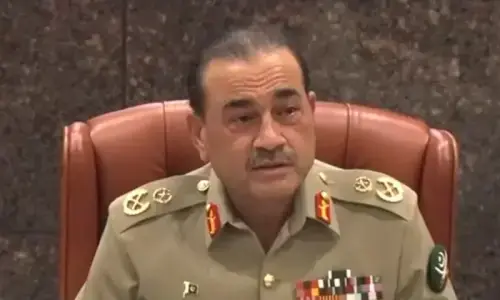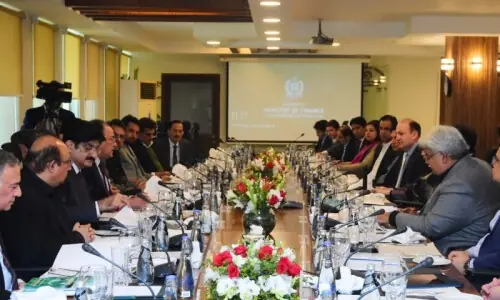LAHORE: Since 2010, 12 laws and amendments have been passed in Punjab focusing on women’s rights.
The domestic violence and women’s protection laws, the violence against women law and a designated centre, establishment of Punjab ombudsperson’s office supporting the sexual harassment law, Punjab Women Protection Authority which takes care of Darul Amans, and amendments to the child labour, inheritance, child marriage, and reproductive health laws.
Mumtaz Mughal, regional director of Aurat Foundation, feels that the laws are part of the women’s movement today. “We (the women) have managed to bring these laws in action today. Yes, implementation is not 100 per cent, but there is change and it’s all because of a struggle that happened years ago.”
She referred to the women’s movement in the 1980s during Ziaul Haq’s regime: a fight against his discriminatory laws. Women hit the streets to protest, which turned violent. Propelled mainly against the Hudood Ordinance, the protests eventually resulted in the formation of Women’s Action Forum (WAF).
Zia’s black laws often targeted marginalised groups, and when there was a call for protest, only women turned up.
Nighat Khan, one of the founders of WAF, remembers that time as a turning point for the women’s movement. “But I will not restrict the women’s movement to only 1981,” she says. “In fact, I will say that it was only the second phase of the movement. The first was when Begum Rana Liaquat Ali Khan and other begums and ladies – despite belonging to the aristocracy ─ spoke strongly for women’s rights.”
The movement, in a way, had begun in the 1930s when the first Women’s Conference was held in Lahore demanding women’s rights. The role of women post independence was also strong and the then first lady Rana Liaquat Ali held strong views about women. But other women were always part of this ‘movement’ too, including artists and writers, labour leaders and others.
In the 1970s, the then first lady, Nusrat Bhutto, actively lobbied for women, enabling more and more to join civil services, foreign service, police, law, constitutional committees, and even the military to some extent. Even journalism saw some excellent women journalists.
“This was a time when dictatorship ended, but mindsets remained the same,” says Neelum Hussain, also part of the struggle in the ‘80s, while talking about the post-Zia era of the ‘90s as the third phase of women’s movement. “There was democracy, but a lot of confusion. Before this, women who were together had a clear and common enemy. Unfortunately, that mindset still prevails.”
Neelum sees “Wahabi morality” still interfering with women’s rights. “Where we had struggled to bring some kind of change, today religion is misused and there is a culture to stop women from being liberated, starting from their bodies, which has become emblematic to morality,” she says.
She mentions the media and its sorry portrayal of women as eternal victims whose pathetic fate is a fixed and inevitable reality, while any liberal woman is shown as dark and immoral.
“The media – both news and entertainment – are a double-edged sword,” she says. “But most of the time they are constricting spaces instead of opening them up.”
Both Neelum and Nighat feel there may be hope today with young blood joining the fight.
“Today, I think the word feminism is resurfacing,” says Nighat. “There are female students collecting under banners, including NSF, as well as groups in public institutes such as Government College University and Punjab University. And other groups, albeit small, but important, such as Girls at Dhabas and Women’s Collective that are impressive. They may bring about a different kind of movement in the times to come.”
Sara Suhail, who is a gender studies expert, says the main problem today may be that women are not mobilised enough and the feminist movement needs to be all-encompassing instead of exclusive. “We need to bring together women from various ethnicities, regions, classes and religions,” she says. “The old guard is disappearing and it’s up to us to do this.”
Meanwhile, MPA Naushin Hamid says women are definitely more visible, politically speaking, especially in assemblies and campaigns. “The new electoral reforms give women much more strength to fight elections,” she says. “The five per cent representation in direct elections is commendable. Even legislation wise women are coming up with more pro-women laws than men.”
But she says sexual harassment and a rigid mindset towards women is rampant in assemblies too. “We have not come that far,” she says. “The women in opposition still get a chance to talk, but those in the treasury are silenced.”
MPA Faiza Malik agrees and adds that women have proven that they are better performers politically.
“Perhaps, we do not have enough unity amongst us to continue a struggle against closed minds, but the women in assemblies have always spoken about issues in a better way and represented their constituencies much better than their male counterparts,” she says.
Published in Dawn, March 8th, 2018

































